Have you been diagnosed with an inflammatory condition, like obesity, diabetes, autism, depression, allergies, asthma or arthritis?
Or maybe you’ve read my post ‘All you Need to Know about the Anti-Inflammatory Diet’ and want to try it out for yourself.
Well, to make it a little easier for you, I’ve come up with six tasty and health meal plans, which will almost get you through your first week on this healing diet.
The Anti-Inflammatory Food Pyramid
To help you understand how I came up with these different eating plans, let me introduce you to the anti-inflammatory food pyramid, from the diet’s creator Dr. Andrew Weil.
Source: Dr. Weil
As you can see, your plate will be filled with an array of tasty and delicious foods.
Before we get stuck into the meal plans let’s look at each of the layers of Weil’s pyramid and see how the food groupings help fight inflammation.
Vegetables and Fruits
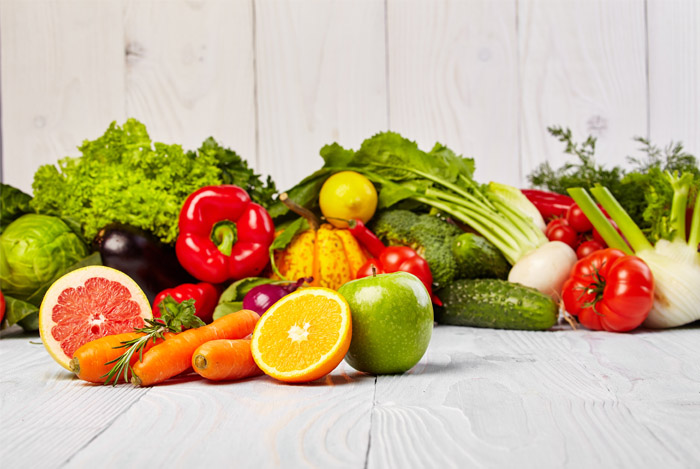 Fruits and vegetables will make up the bulk of your meals and snacks. Aim for at least 4 to 5 servings of vegetables and 3 to 4 servings of fruit per day.
Fruits and vegetables will make up the bulk of your meals and snacks. Aim for at least 4 to 5 servings of vegetables and 3 to 4 servings of fruit per day.
A 2009 Russian study on animals demonstrated that naturally occurring antioxidants reduce inflammation, with many, many more studies backing this up.
And, of course, fruits and vegetables are loaded with natural antioxidants such as flavonoids, carotenoids and vitamins A, C and E making these foods the key to fighting inflammation.
The more brightly colored the fruit or vegetable, the more rich in antioxidants. That’s why dark leafy greens, bright orange carrots and rich blueberries are all such superfoods.
In addition to fresh produce, you can get your antioxidant fix from frozen produce, which can sometimes have as much, if not more, antioxidants than the fresh stuff, according to two independent studies!
Avoid the canned or dried varieties as they are often high in sugar.
Whole Grains, Beans & Legumes
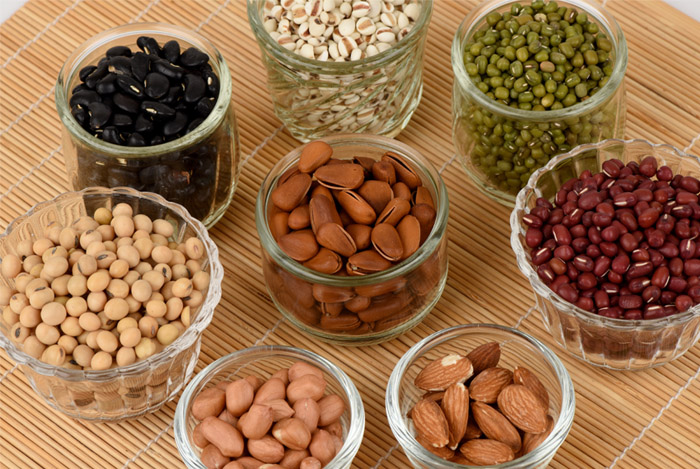 When it comes to carbohydrates, choose whole over refined grains every time. That means no white bread, white pasta, white rice, sugar or pastries.
When it comes to carbohydrates, choose whole over refined grains every time. That means no white bread, white pasta, white rice, sugar or pastries.
Instead, go with brown rice, buckwheat, quinoa, oatmeal and wholegrain bread, aiming for 3 to 5 servings a day. Wholegrain pasta, cooked al dente, can be enjoyed 2 to 3 times a week.
Numerous studies cite the anti-inflammatory effects of these whole grain foods.
They have been shown to reduce markers of systemic inflammation in obese children, with regular consumption shown to lower death rates in inflammatory-related conditions such as coronary heart disease and diabetes.
Beans and legumes are great sources of plant-based protein and are low glycemic and high fiber to boot.
For example, one cup of black beans will give you 15 grams of both protein and fiber.
In addition to several important nutrients like magnesium, one cup of black beans also contains 64% of your recommended daily value of folate, something shown to reduce inflammatory markers.
One to two portions of beans or lentils are recommended per day.
Healthy Fats
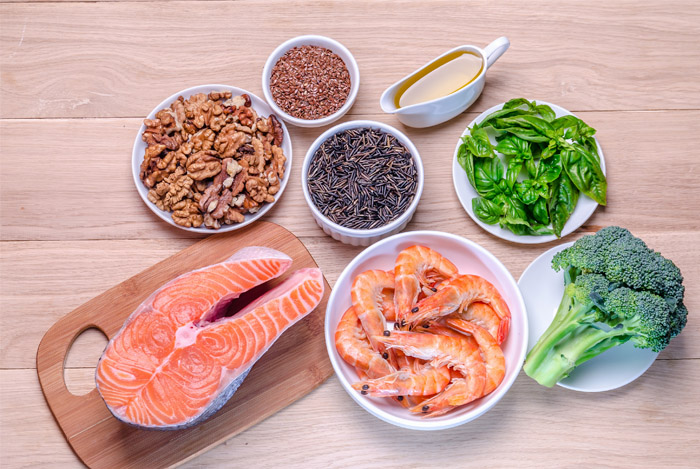 Not only do they boost satiety (the feeling of fullness) but healthy fats are rich in monounsaturated and omega 3 fatty acids which provide antioxidants like vitamin E and selenium.
Not only do they boost satiety (the feeling of fullness) but healthy fats are rich in monounsaturated and omega 3 fatty acids which provide antioxidants like vitamin E and selenium.
Omega 3s are also potent anti-inflammatories. When we don’t get enough omega 3s to balance out our omega 6 intake, then it has been shown to lead to inflammation.
Don’t worry about getting enough omega 6s as the standard American diet is loaded with them!
Anti-inflammatory ‘good fats’ include avocados, seeds, nuts, nut butters and whole olives. Where possible, choose extra-virgin olive oil as your oil of choice. A compound in the oil, oleocanthal, has powerful anti-inflammatory benefits.
Eat between 5 and 7 servings of these good fats every day.
Fish & Seafood
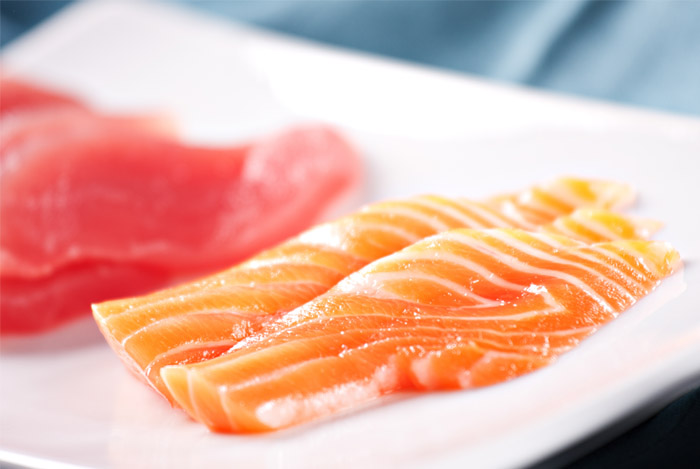 Fish, particularly fatty fish like salmon, tuna, sardines, mackerel, and trout, is an incredibly healthy food that is loaded with omega 3s and other vital nutrients, including iron, vitamin D, iodine and B12.
Fish, particularly fatty fish like salmon, tuna, sardines, mackerel, and trout, is an incredibly healthy food that is loaded with omega 3s and other vital nutrients, including iron, vitamin D, iodine and B12.
If you’re not eating fish 2 to 6 times a week, try a fish oil supplement daily.
Read more about super healthy fish here.
Whole Soy Foods
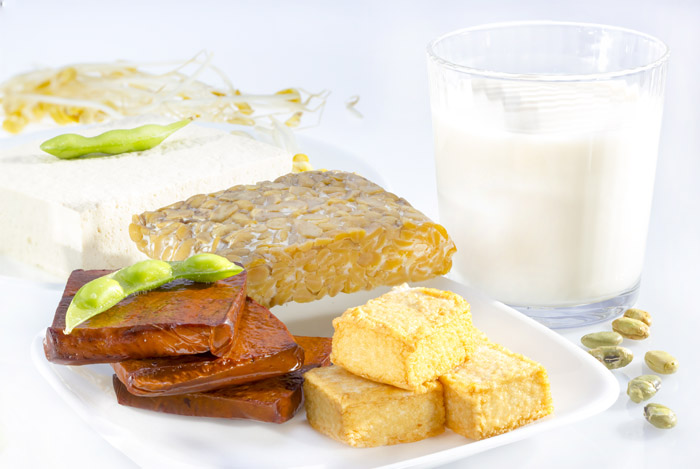 Non-gmo soy contains isoflavones that have antioxidant activity and fight inflammation.
Non-gmo soy contains isoflavones that have antioxidant activity and fight inflammation.
Researchers examined the diets of over 1,000 Chinese women who were part of the 2012 Shanghai Women’s Health Study. They found that, the more soy products the women consumed, the less markers of inflammation they displayed.
Try 1 to 2 portions of tofu, tempeh, edamame, soy nuts and soy milk per day. Make sure to always choose organic soy products to ensure they are not genetically modified and steer clear of processed soy foods.
Cooked Asian Mushrooms
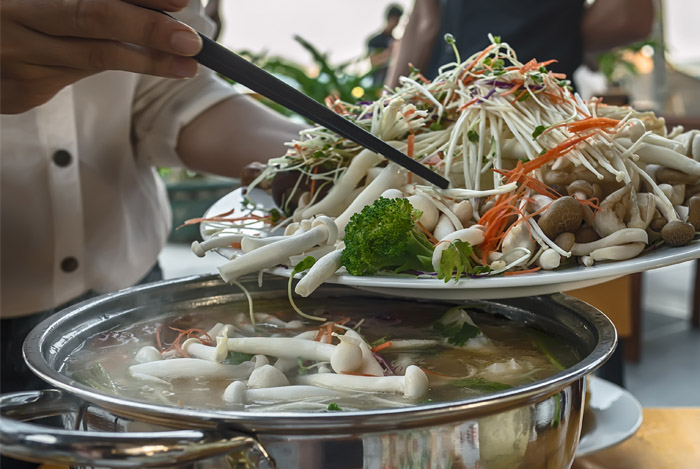 Mushrooms like shiitake, maitake and oyster mushrooms are known to enhance immune function, protect against cancer and fight inflammation.
Mushrooms like shiitake, maitake and oyster mushrooms are known to enhance immune function, protect against cancer and fight inflammation.
Always cook these mushrooms before eating. Cooking makes them easier to digest, releases their nutrients including protein and B vitamins, and kills any toxins that may be on the fungus.
On the anti-inflammatory eating plan, you can enjoy unlimited quantities of these mushrooms. Add them to soups, stir-fries and salads…and anything else that takes your fancy.
Animal-Based Proteins
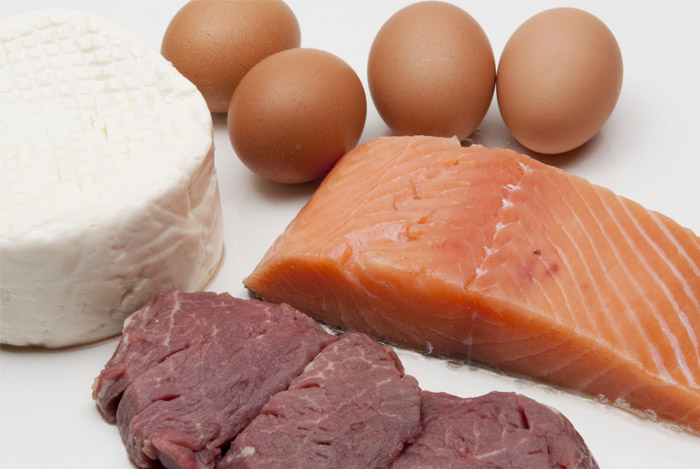 According to Dr Michael Gregor, a single meal of meat, dairy, and eggs causes inflammation within the body just hours after eating it.
According to Dr Michael Gregor, a single meal of meat, dairy, and eggs causes inflammation within the body just hours after eating it.
After 5 or 6 hours, this calms down, but then it’s time for our next meal, again loaded with animal proteins, causing an inflammatory response all over again.
This is why the anti-inflammatory diet contains so little animal protein (a maximum of two servings a week).
When you do add meat, dairy or eggs to your meals, make sure it comes from animals that are free-range, organic and grass-fed.
Herbs & Spices
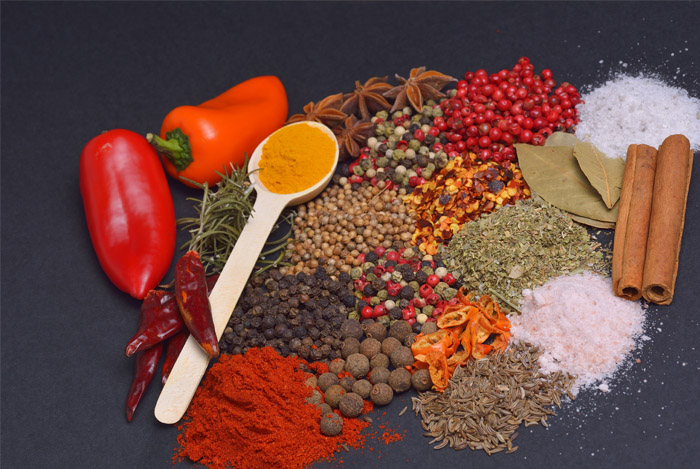 Herbs and spices aren’t just for flavoring your food – they possess anti-inflammatory and antioxidant properties which can help fight many illnesses.
Herbs and spices aren’t just for flavoring your food – they possess anti-inflammatory and antioxidant properties which can help fight many illnesses.
Season your food liberally with all sorts of fresh and dried herbs and spices including:
- Oregano – which has more antioxidants than most fruit. A half teaspoon daily has been shown to stop inflammatory activity.
- Garlic – antibiotic, antifungal, and antibacterial properties. Also contains a compound that has proven anti-inflammatory benefits.
- Turmeric – one of the most anti-inflammatory spices around, thanks to turmeric’s star compound, curcumin.
- Black Pepper – take along with turmeric as a compound in the pepper, known as piperine, can increase curcumin bioavailability by 2000%!
- Ginger – another anti-inflammatory root. Check out my post on this potent spice for all its health benefits.
- Cinnamon – anti-inflammatory, antioxidant, antibacterial and anti-fungal properties as well as the ability to suppress the appetite.
Tea
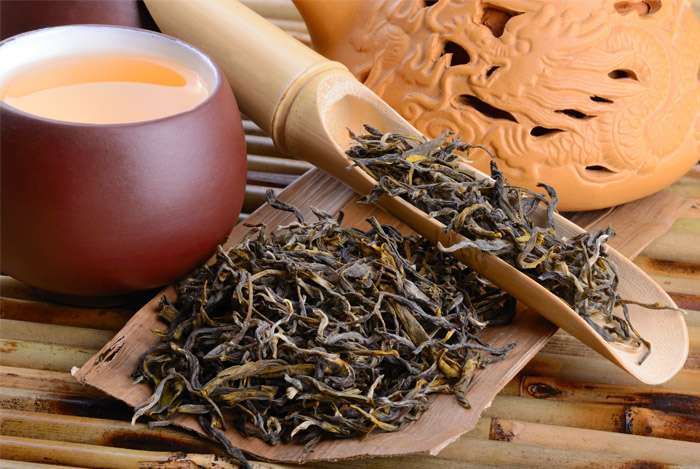 This healthy eating plan recommends two to four cups a day of white, green or oolong tea. Not only are these warm drinks comforting and filling, but they each have unique healing properties.
This healthy eating plan recommends two to four cups a day of white, green or oolong tea. Not only are these warm drinks comforting and filling, but they each have unique healing properties.
Oolong tea is loaded with antioxidants and has been found to lower cholesterol levels and prevent heart disease and inflammatory conditions.
White tea is an unfermented tea that one study found had the most potent anti-cancer properties when compared with other teas.
Green tea boasts some incredible health benefits, which you can read about here. It also has proven anti-inflammatory qualities. Opt for Matcha green tea, a Japanese blend, which has 17 times the antioxidant content of wild blueberries.
Supplements
 Dr Weil advises a daily high-quality multivitamin to include vitamin C, vitamin E, mixed carotenoids and selenium.
Dr Weil advises a daily high-quality multivitamin to include vitamin C, vitamin E, mixed carotenoids and selenium.
If you’re not eating a lot of fish, he also recommends 2-3 grams of a molecularly distilled fish oil supplement each day plus 2,000 IU of vitamin D3.
Of course, if you live in a sunny climate, you’ll meet all your vitamin D needs from the sun.
Red Wine & Dark Chocolate
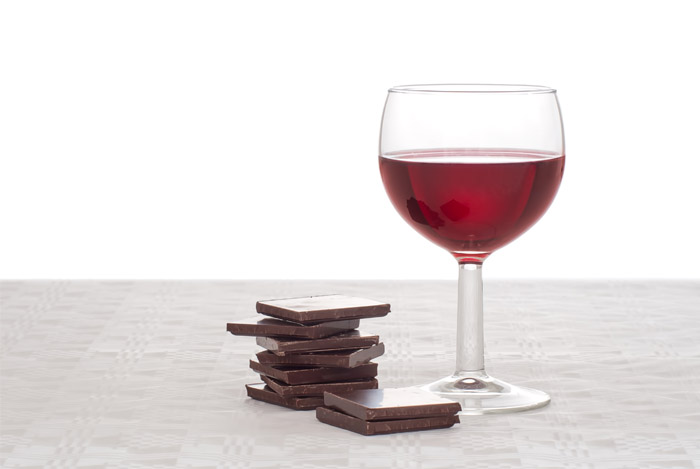 These two categories are at the very top of the pyramid, meaning they should be enjoyed sparingly, if at all.
These two categories are at the very top of the pyramid, meaning they should be enjoyed sparingly, if at all.
If you don’t drink red wine, then don’t start! While organic red wine contains beneficial antioxidants and compounds, which can help fight inflammation, too much will have negative health effects.
Cocoa, the main ingredient in chocolate, is rich in antioxidant flavonoids called flavanols. It also has potent anti-inflammatory powers when enjoyed as an occasional indulgence.
Have a look at some of the other health benefits of dark chocolate here.
What’s Missing
You’ll notice that this eating plan, like all healthy plans, is devoid of refined carbohydrates like white bread, sugar, salt, fried foods and takeout, sodas, red and processed meats and omega 6 filled vegetable oils like soybean, sunflower and corn oil.
These are all inflammation promoting foods and aren’t necessary in any diet.
Now that you know you’re not going to starve on the anti-inflammatory diet, or be stuck chewing on food that tastes like cardboard, let’s get right to the six different meal plans I’ve compiled for you.
Anti-Inflammatory Meal Plans
Day 1 Meal Plan
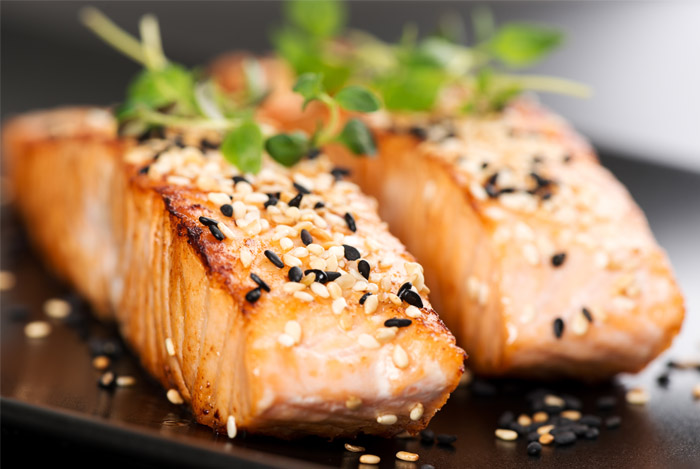 Breakfast: Tea of choice, oatmeal made with soy milk and topped with blueberries, ground flaxseeds, half a banana and a sprinkling of cinnamon
Breakfast: Tea of choice, oatmeal made with soy milk and topped with blueberries, ground flaxseeds, half a banana and a sprinkling of cinnamon
Morning Snack: A handful of almonds
Lunch: Spinach salad with cherry tomatoes and grilled salmon, with an extra-virgin olive oil and lemon juice dressing
Afternoon Snack: Green tea with fresh ginger, half an avocado on rye crackers with cracked black pepper and red chili flakes
Dinner: A chickpea and vegetable curry (try sweet potato, peas, spinach, cauliflower, Asian mushrooms, turmeric etc.) with brown rice
Treat (optional): Small glass of red wine
Day 2 Meal Plan
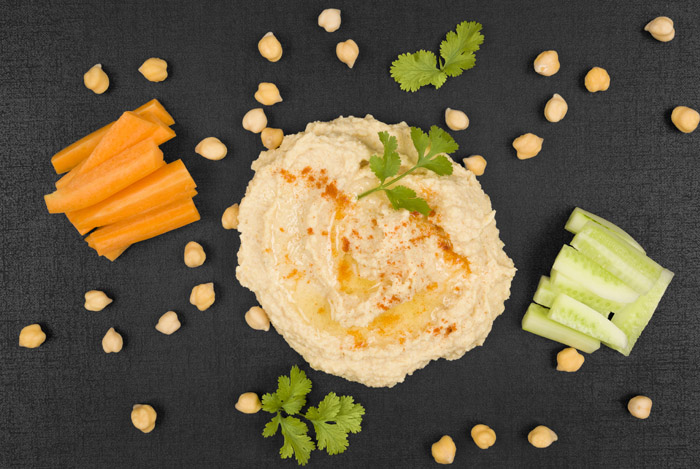 Breakfast: One omega-3 enriched organic egg, poached, on a slice of wholegrain toast and an apple
Breakfast: One omega-3 enriched organic egg, poached, on a slice of wholegrain toast and an apple
Morning Snack: Green tea; hummus with sticks of carrot and cucumber
Lunch: Homemade miso soup with soba noodles, peas, mushrooms and green onion; a salad with avocado, mango, mixed greens, cherry tomato and a lime and olive oil vinaigrette
Afternoon Snack: Spiced watermelon and pistachios (see recipe here)
Dinner: Wholegrain pasta – cooked al dente – with kale, hemp & flaxseed oil pesto (see recipe here); green tea
Day 3 Meal Plan
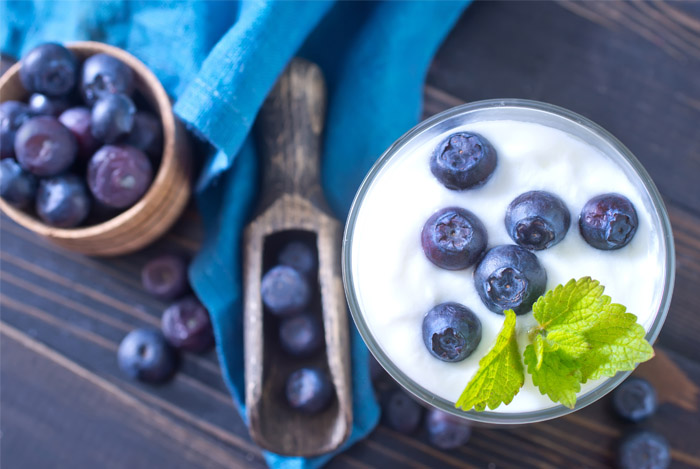 Breakfast: Smoothie with leafy greens of your choice, a banana, a tablespoon of seeds (hemp, flax or chia), pinch of cinnamon and non-dairy milk or water
Breakfast: Smoothie with leafy greens of your choice, a banana, a tablespoon of seeds (hemp, flax or chia), pinch of cinnamon and non-dairy milk or water
Morning Snack: Green tea; soy yogurt with blueberries
Lunch: Leftover pesto pasta from Day Two; a pear or serving of melon
Afternoon Snack: Hummus, sliced avocado and cherry tomatoes on rye crackers
Dinner: Thai-style steamed trout made with ginger, chili, lime, garlic and soy sauce, served with broccoli and a baked sweet potato
Treat (optional): Two squares of dark chocolate (minimum 70% cocoa solids)
Day 4 Meal Plan
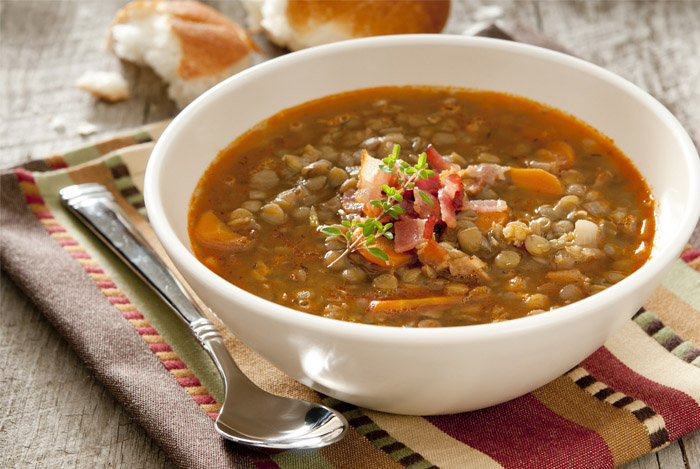 Breakfast: Chia pudding made with soymilk, cinnamon and a banana
Breakfast: Chia pudding made with soymilk, cinnamon and a banana
Morning Snack: Green tea and a small apple oat-bran muffin
Lunch: Vegetable and lentil soup; an orange
Afternoon Snack: Celery sticks filled with almond butter
Dinner: Chicken fajitas with one organic chicken breast, mixed vegetables and spices topped with salsa, half an avocado and served in 1 to 2 wholegrain tortilla wraps
Day 5 Meal Plan
 Breakfast: Same smoothie as Day Three
Breakfast: Same smoothie as Day Three
Morning Snack: Green tea with sliced lemon; a rice cake with almond butter
Lunch: Chopped power salad with baked tofu and almond-miso dressing served with a wholegrain pita bread
Afternoon Snack: Spicy roast chickpeas (see recipe here) and a handful of berries
Dinner: Pan-seared fish with shiitake mushrooms served with sautéed green vegetables and quinoa
Treat (optional): Small glass of red wine
Day 6 Meal Plan
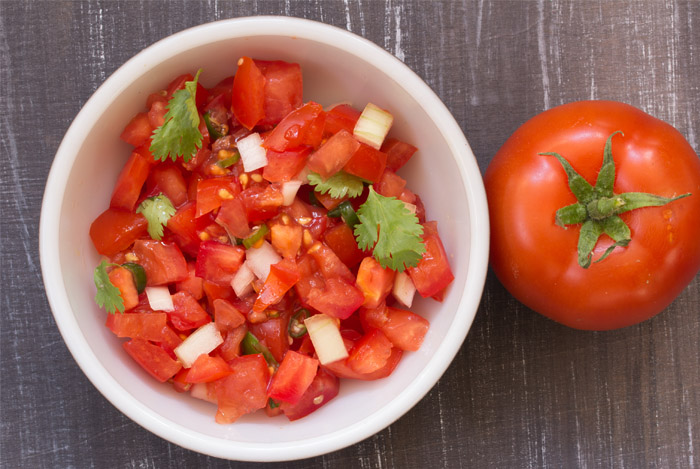 Breakfast: Overnight oats made with soy milk or yogurt, topped with nuts, shredded coconut and fresh fruit; green tea with fresh ginger
Breakfast: Overnight oats made with soy milk or yogurt, topped with nuts, shredded coconut and fresh fruit; green tea with fresh ginger
Morning Snack: Steamed edamame with olive oil and lemon juice
Lunch: Lemon and herb sardine salad; an apple
Afternoon Snack: Tomato salsa with sliced bell peppers to dip
Dinner: Sweet potato, black bean and rice burger in a wholegrain bun, with sliced avocado and a green salad; followed by tea of your choice
Treat (optional): Two squares of dark chocolate (minimum 70% cocoa solids)
Looking for a final meal plan to nicely round out your first week of anti-inflammatory eating? It’s at the end of my first post on this diet. You’ll find it here.
So that’s it – one delicious week on the anti-inflammatory eating plan made easy.
What do you think – will you be trying out the anti-inflammatory diet?
The post 6 Great Tasting Anti-Inflammatory Meal Plans appeared first on Nutrition Secrets.
http://www.nutritionsecrets.com/anti-inflammatory-meal-plans/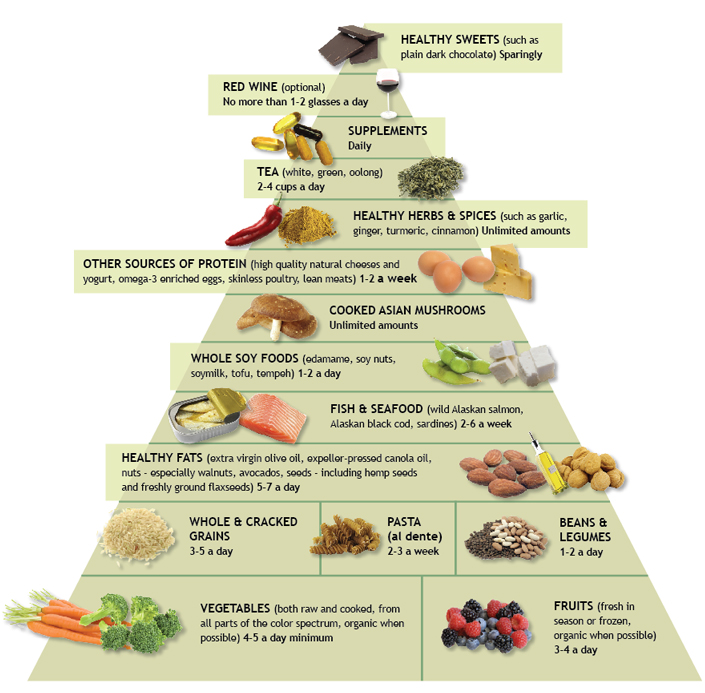

No comments:
Post a Comment